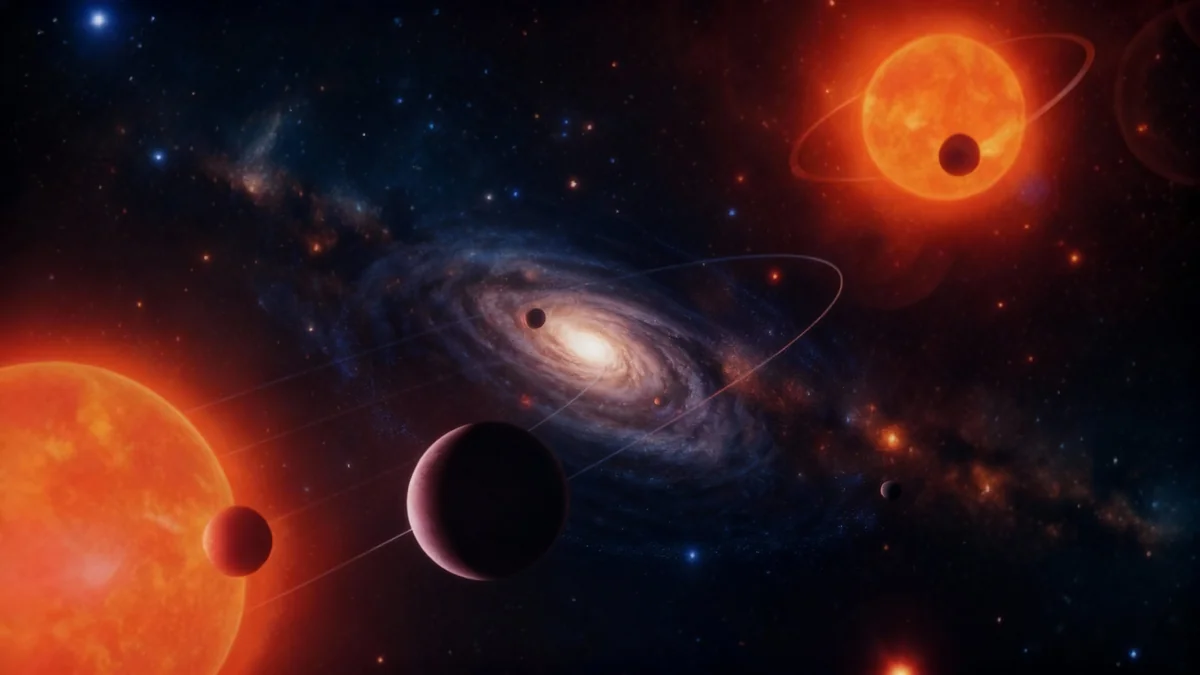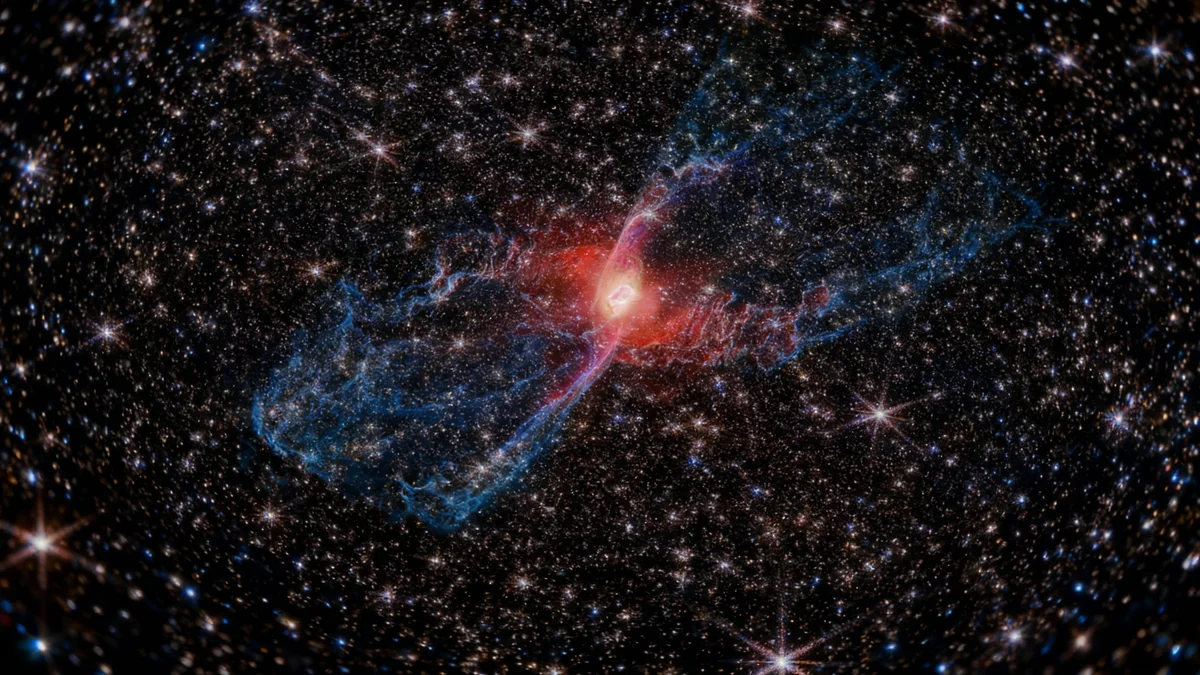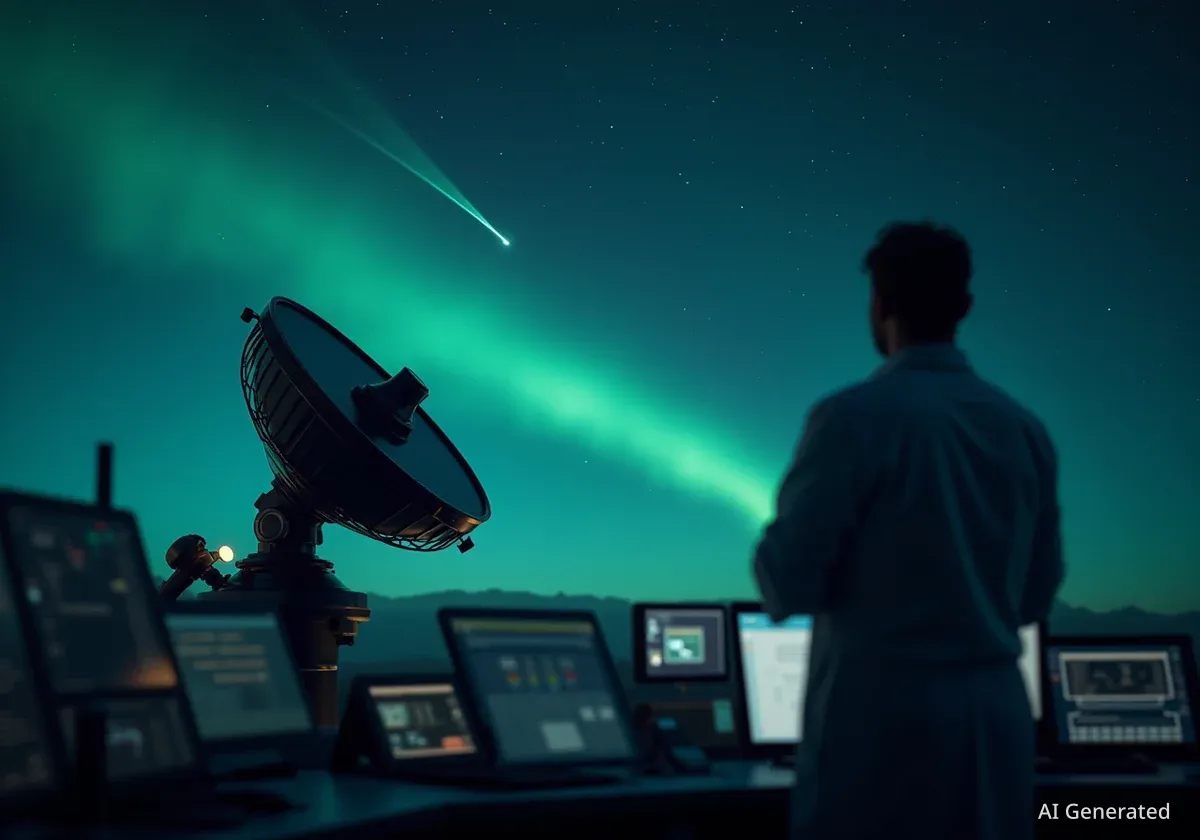An international team of astronomers has identified a remarkable planetary system 190 light-years from Earth, where three Earth-sized planets orbit two closely bound stars. The discovery within the TOI-2267 binary system challenges long-held beliefs about where and how planets can form, suggesting that even dynamically unstable environments can host rocky worlds.
This system is the first of its kind where transiting planets have been confirmed orbiting both stars in a binary pair. The finding provides a unique natural laboratory for studying the limits of planet formation and the diversity of planetary architectures throughout our galaxy.
Key Takeaways
- Astronomers discovered three Earth-sized planets in the TOI-2267 binary star system, located 190 light-years away.
- It is the first system where transiting planets have been detected orbiting both stars of a binary pair.
- The discovery challenges conventional theories, as binary systems were often considered too unstable for planet formation.
- The system will be a key target for further study with advanced instruments like the James Webb Space Telescope.
A Groundbreaking Discovery in a Double-Star System
Astronomers have announced the detection of three small, rocky planets within the TOI-2267 system. The finding, detailed in the journal Astronomy & Astrophysics, marks a significant milestone in exoplanet research. Binary star systems, where two stars orbit a common center of gravity, have historically been considered inhospitable environments for planet formation due to intense gravitational forces.
The TOI-2267 system consists of two cool M-dwarf stars orbiting each other closely. Despite these challenging conditions, the international research team confirmed the presence of three worlds comparable in size to Earth. These planets exist in tight, short-period orbits around their respective host stars.
“Our analysis shows a unique planetary arrangement: two planets are transiting one star, and the third is transiting its companion star,” stated Sebastián Zúñiga-Fernández of the University of Liège (ULiège), the study's first author. “This makes TOI-2267 the first binary system known to host transiting planets around both of its stars.”
This configuration was previously theoretical. The confirmation provides concrete evidence that planetary systems can form and remain stable under conditions once thought to be prohibitive.
System at a Glance: TOI-2267
- Distance from Earth: Approximately 190 light-years
- Star Type: Binary M-dwarf (M5V-M6V)
- Number of Planets: 3 confirmed (Earth-sized)
- Key Feature: First system with planets transiting both stars.
Challenging the Rules of Planet Formation
The existence of planets in the TOI-2267 system forces scientists to reconsider the parameters for planetary development. The gravitational tug-of-war between two stars is believed to disrupt the protoplanetary disks of dust and gas from which planets coalesce.
However, the three rocky worlds in this system suggest that nature has found a way to overcome these hurdles. The discovery implies that the processes of planet formation may be more robust and adaptable than current models account for.
“This system is a true natural laboratory for understanding how rocky planets can emerge and survive under extreme dynamical conditions, where we previously thought their stability would be compromised,” explained Francisco J. Pozuelos, a researcher at the Instituto de Astrofísica de Andalucía (IAA-CSIC) and co-leader of the study.
The TOI-2267 system is also notable for being the most compact and coldest pair of stars known to host planets, further adding to its scientific value. It provides an unprecedented opportunity to test and refine models of planetary evolution in complex stellar environments.
What Is a Transiting Planet?
The transit method is one of the primary ways astronomers detect exoplanets. When a planet passes directly in front of its star from our point of view, it blocks a tiny fraction of the star's light. Telescopes can measure this periodic dimming, which reveals the planet's presence, its size, and the duration of its orbit. Detecting transits around both stars in a binary system is an exceptionally rare event.
A Collaborative International Effort
The discovery was the result of a coordinated effort involving multiple observatories and research teams across the globe. Initial data from NASA’s Transiting Exoplanet Survey Satellite (TESS) hinted at the presence of these planets. However, it was specialized software developed by astronomers at ULiège and IAA-CSIC that first identified two of the three planetary signals.
This early detection allowed the team to quickly initiate a ground-based follow-up campaign. Robotic telescopes, including the SPECULOOS and TRAPPIST facilities led by ULiège, played a critical role in confirming the planetary nature of the signals. These instruments are specifically designed to study small, cool stars like the ones in the TOI-2267 system.
The combination of space-based survey data from TESS and targeted observations from specialized ground telescopes proved essential. This powerful synergy highlights a modern approach to exoplanetary science, enabling researchers to validate and characterize complex systems that might otherwise be missed.
The Future of Research for TOI-2267
The discovery of these three Earth-sized worlds opens a new chapter for exoplanet research and raises numerous questions for future investigation. Scientists are eager to learn more about the composition and characteristics of these distant planets.
Advanced observatories like the James Webb Space Telescope (JWST) are ideally suited for this task. Future observations could allow astronomers to precisely measure the planets' masses, which, when combined with their known sizes, will reveal their densities. This information is crucial for determining whether the planets are rocky, like Earth, or have a different composition.
Furthermore, JWST may even be able to analyze the atmospheric composition of these worlds, searching for key molecules that could provide clues about their environments. The findings from TOI-2267 will undoubtedly influence future searches for planets, encouraging astronomers to look more closely at binary star systems as potential hosts for rocky worlds.
As technology advances, systems like TOI-2267 will move from being anomalies to becoming key case studies, helping to build a more complete picture of how planets form and evolve across the vast and varied expanse of the Milky Way galaxy.





